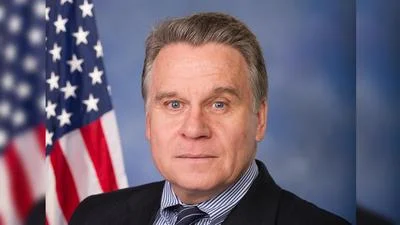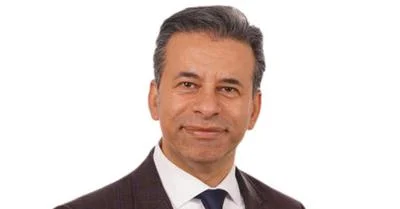Good afternoon and thank you for that kind introduction. On behalf of President Bush and the U.S. Department of Commerce, it is a great pleasure to welcome you to today’s U.S.-India High Technology Cooperation Group seminar.
I want to begin by thanking the U.S.-India Business Council (USIBC) for hosting this workshop and luncheon. I would also like to thank CII and FICCI and welcome the many members of each of their delegations who have traveled a great distance to be with us for this event.
As co-sponsors, both CII and FICCI have worked closely with USIBC to assemble the strongest policymakers and implementers on promoting biotechnology cooperation, trade, and investment between U.S. and India to be a part of the program.
To Minister Sibal and the delegation from the Government of India, thank you for making the long trip to Washington. We greatly appreciate you sharing your time with us.
There is much to be optimistic about regarding our two nations’ warm relationship and the President is looking forward to welcoming Prime Minister Manmohan Singh to the White House next month on July 18. That visit, and events like this leading up to the Prime Minister’s visit, marks the next stage in the expanding and deepening U.S.-India relationship, building on the recent high-level exchanges and initiatives between our two governments. Our two leaders are expected to touch upon a number of aspects of U.S.-India cooperation including economic, energy, and strategic elements that will strengthen our bond.
President Bush values our association with India and is committed to enhance relations between the world’s oldest democracy (U.S.) and the world’s largest democracy (India).
The United States and India share a number of common goals, such as combating terrorism, promoting democracy, encouraging stability in Asia and beyond, and achieving economic development throughout the world by building prosperity. The last several years have brought remarkable progress in U.S.-India relations, including the establishment of the U.S.-India High Technology Cooperation Group.
Yet, while there has been much improvement in our strategic and political ties, I believe we can all agree that the potential for even more progress can be made in our bilateral trade.
Twenty-five years ago U.S.-India bilateral trade was only $2.8 billion. Last year, it stood at $22 billion. This is, however, much lower than it could be. In 2004, India was only our 24th largest export market.
U.S. investment in India also tells a story of growth, but with unrealized potential. U.S. direct foreign investment in India amounted to $3.6 billion as of the end of 2003. Yet, while this makes the United States the largest foreign investor in India, we have U.S. companies investing vastly larger sums elsewhere around the globe.
I believe we can do better.
India may have been a bit of late comer to economic reforms that lead to foreign investment, trade – and, ultimately, sustained growth – however, since the early 1990’s the upward trends have reflected the reforms undertaken by successive governments. Those reforms are very much welcomed.
India’s tariff reductions in recent years have opened the door to certain high tech products. Various deregulatory measures have also been helpful.
Notable as well are other significant liberalizing measures, including the new open skies agreement with the United States, India's first such agreement. Recent legislation to extend product patent protection to pharmaceutical and agricultural chemicals is another key reform measure.
We’re looking forward to working with India to do even more. We look for India to improve upon your patent legislation, as well as move to fight copyright, trademark and intellectual property infringement. Commerce Secretary Gutierrez has made it crystal clear that protection of intellectual property rights is a very high priority for this Administration.
I understand that during the USIBC’s 30th Jubilee earlier this month, a particularly hot topic was India and China’s emergence as economic powers. Distinctions were made as to the strengths of each country: China is making much headway developing its infrastructure ….. while India is growing a significant cohort of new entrepreneurs.
The United States is eager to collaborate with India to increase the level of trade to a level closer to the volume of trade we currently have with China. I know that’s a huge goal but I think it’s a goal worth pursuing.
A good starting point is building out India’s infrastructure. Prime Minster Singh and his economic team have made this a key objective. Better infrastructure will be crucial for India to sustain high levels of economic growth of which it is capable. In turn, higher growth will further the Indian Government's goal of improving the lives of all its citizens by extending broader access to education, clean water, and sanitation.
Increasing, or even removing, foreign investment caps would help the government to achieve these goals. But investors will be reluctant to come unless India’s rules and regulations are streamlined, and made significantly more transparent and predictable. While one cannot eliminate investment risk, there is much the Indian government can do to mitigate such risk by opening up the process.
There has been a strong push to strengthen U.S.-India high technology trade and cooperation. Recognizing the greater potential in our bilateral trade, we established the U.S.-India High Technology Cooperation Group, or the “HTCG,” in November 2002. Its purpose is to expand bilateral high-technology trade by facilitating increased access for India to controlled U.S. technology consistent with U.S national security interests and, more broadly, by removing trade barriers.
With regard to controlled technology, we have made significant progress. For example, based on modifications to our export control laws in September 2004, we estimate that licensing requirements have been lifted for tens of millions of dollars in exports to India. In addition, licensing processing times for India have improved, and the denial rate remains low.
On broader high-technology cooperation, we have held a number of discussions on important policy issues that will drive high-technology trade between our two countries, including data privacy, cyber-security, defense technology, and biotechnology. In particular, sessions on life sciences and biotechnology issues were held in July 2003 in Washington, D.C. ….. in Bangalore in November 2003 …. and in New Delhi this past February.
Our two nations have very well-educated work forces. So the collaborative opportunities for scientific and technological breakthroughs are great.
We are reaching a tipping point in biotechnology cooperation, agricultural and medical research, and the development of new pharmaceuticals. Increasing success rates in these fields are within the grasp of the private sector.
Just this past year, the worldwide biotechnology industry's revenue grew by 17 percent to $54.6 billion. Over the next five years industry experts estimate that sales will grow at double- digit rates. According to BIO (Biotechnology Industry Organization), nearly 200 biotech products have been approved by the FDA, and another 370 are in clinical trials for 200 diseases. India is an important part of this progress, currently ranking fourth largest in the production of pharmaceuticals by volume.
It’s critical that all of you understand the implications of India’s new patent legislation, and its implementation. A key to successful collaboration is the ability to protect intellectual property and provide a certain and navigable regulatory framework that gives priority to innovation.
Increased trade from higher levels of collaboration in biotechnology sector, such as pharmaceuticals and agricultural products, should be the result of forums like the one we’re having today.
In particular, the United States would like to deepen scientific and policy exchanges in agricultural biotechnology.
Joint discussions between U.S. and Indian government agencies led to the first meeting last December of the Indo-U.S. Joint Working Group on Agricultural Biotechnology in December 2004. The working group serves as a platform for joint discussion of activities on agricultural biotechnology. We wish to continue to build upon this relationship through identification of new areas for collaboration.
Specifically, we want to work together to promote development of a clear, transparent, and science-based regulatory system for agricultural biotechnology products. A practical and functioning regulatory system ensures that commercialized biotechnology crops are safe for both human health and the environment.
We want to continue working on biotechnology regulation and we stand ready to engage Indian Ministries on issues related to biotechnology regulation, risk communication, and intellectual property protection.
Collaboration on agricultural biotechnology by government and business in both our countries is already strong. I believe we can work together, and learn together, for continued mutual benefit.
The United States and India are also working together in medical and pharmaceutical biotechnology.
I am very pleased to know that Secretary Maharaj Bhan is here today. The Department of Health and Human Services is working closely with his Department of Biotechnology at the Indian Ministry of Science and Technology to promote collaborative research. Two areas are: Your recommendations should be taken to Philadelphia where they can be explored further with a very diverse group of professionals representing all areas of biotechnology. We hope that the resultant synergies can expand and accelerate what we do in the coming months in biotechnology under the HTCG and other bilateral programs.
We are very pleased with the growing level of cooperation between the U.S. and India in science and technology and look forward to continuing the dialogue in the future.
Before being nominated by the President to serve as Deputy Secretary of Commerce, I worked in economic development for many years. One of the things I learned is that collaboration among key players in such a challenging task as biotechnology is essential to progress. And that kind of collaboration is what I see happening here today.
Thank you very much and I wish you a productive and fruitful event.
Source: U.S. Department of Commerce








